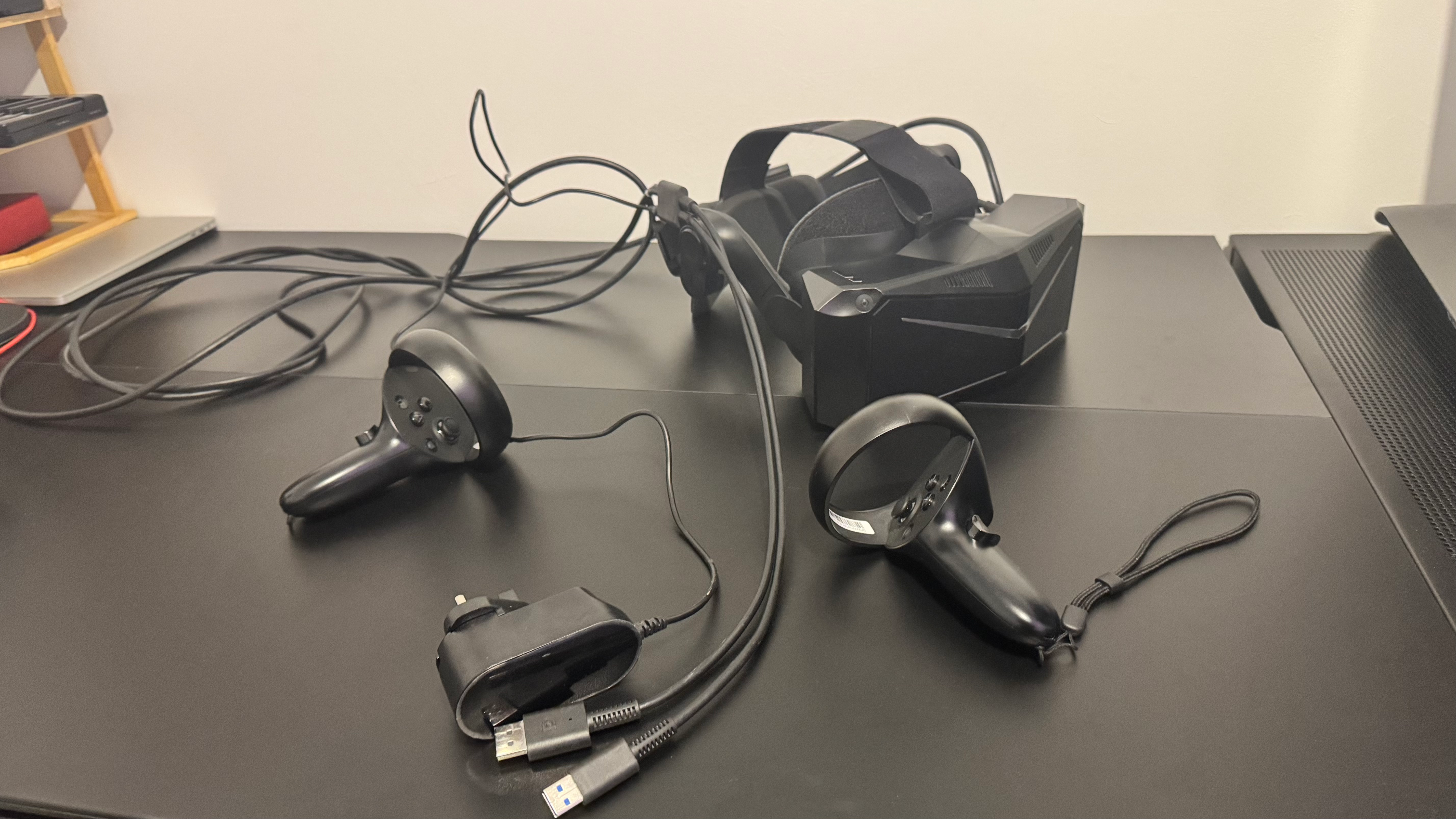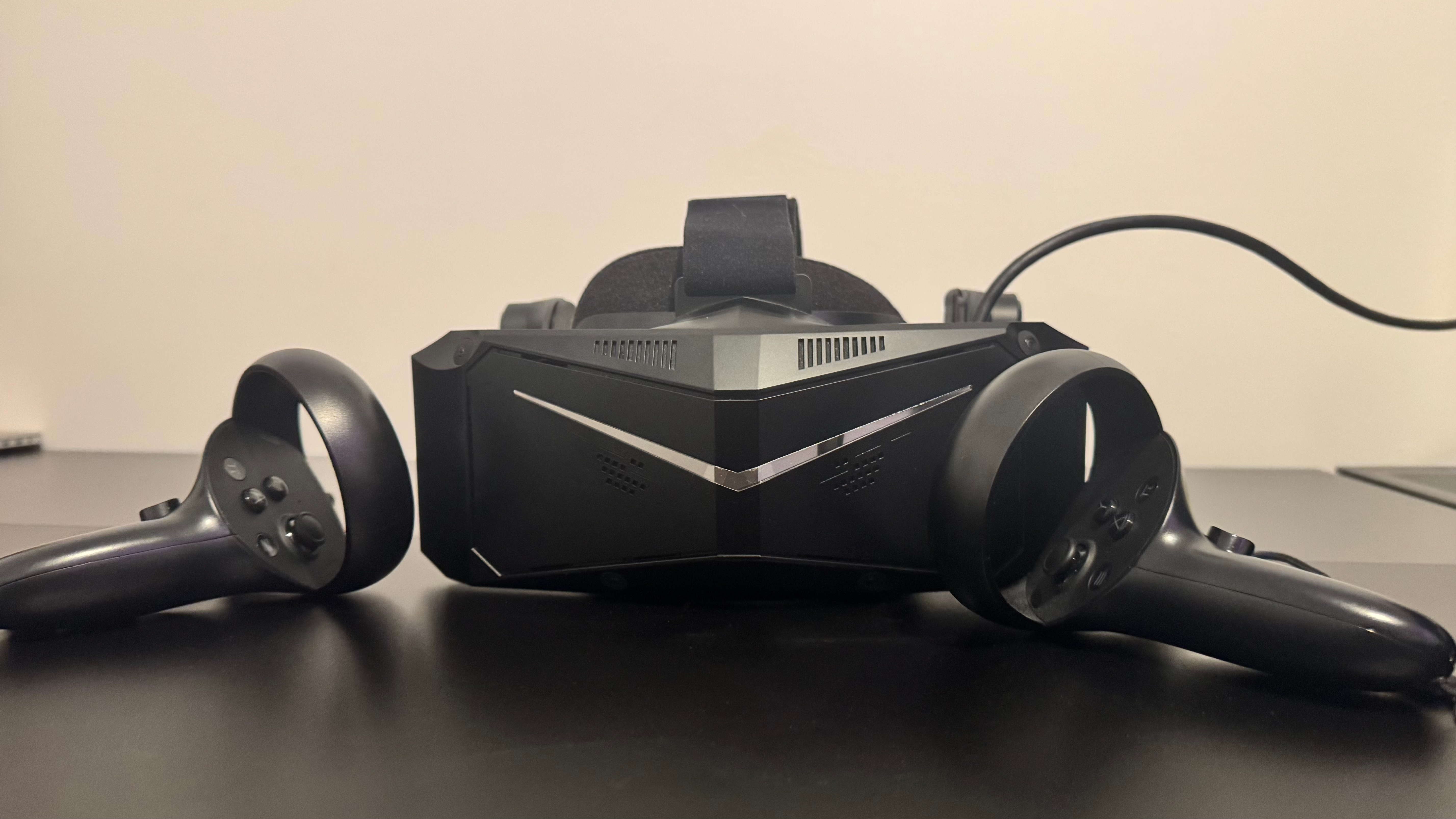
I really didn't like the Pimax Crystal Light the first time I put it on. This headset is clunky and bigger than many of the best VR headsets for gaming right now, and even things like plugging it into its own power outlet and connecting it to the DisplayPort of my PC felt restrictive and a bit more old-school than many would expect now. Of course, these can be necessary parts of getting a screen this lovely, and this is where the tradeoff on high-end VR lies. You just have to hope that the experience is good enough to handle that extra baggage, both to your space and your wallet.
Getting it out of the box, the Pimax Crystal Light has a fairly sci-fi aesthetic, with the main screen housed in a casing that is not only quite wide but made up of a mass of edges.
The very front of the headset has a silver visor-like accent, which reminds me of LeVar Burton's character in Star Trek: The Next Generation or, perhaps a little cooler, a medieval knight. I didn't feel particularly cool in the headset, mostly because that look was accompanied by groans of getting the wires just the right way to avoid the whole headset feeling too cumbersome.
Though you can do little things like tidying the cables to make it all feel a little better on the head, I found the Pimax Crystal Light to be not very uncomfortable at all. The shape around the head is good and cushioned faceplates work well to offset some of that weight but it's all very front-heavy. I still felt that dreaded pressure on the nose that is so common with VR but, within 20 minutes, started to feel it on my entire face.
You can do some messing around with the weight, or get an extra strap to balance it out, but playing with this headset very quickly drained me. As well as this, that included wire gets even more finicky when you realise the whole thing is proprietary.
There is a single mass of cables that cannot be unplugged from the headset without tearing the whole thing apart, which not only limits how far you can walk away from your gaming PC but also means that a rogue cat gnawing a wire could see the end of the entire thing.
This also makes troubleshooting harder as there are three separate cables to unplug and plug back in, being the power outlet, USB-A, and DisplayPort. Given how dependent this is on those specific ports present in your rig, this makes VR gaming on a gaming laptop a bit harder too.
However, even if you manage to get an adapter into the DisplayPort and get the whole VR headset set up and ready to go, you have to consider performance. At a mighty impressive 2880 x 2880 per eye, you need something capable of actually rendering all of that directly into your headset. Luckily, Pimax does what it can to accommodate that graphical intensity with fixed-foveated rendering.
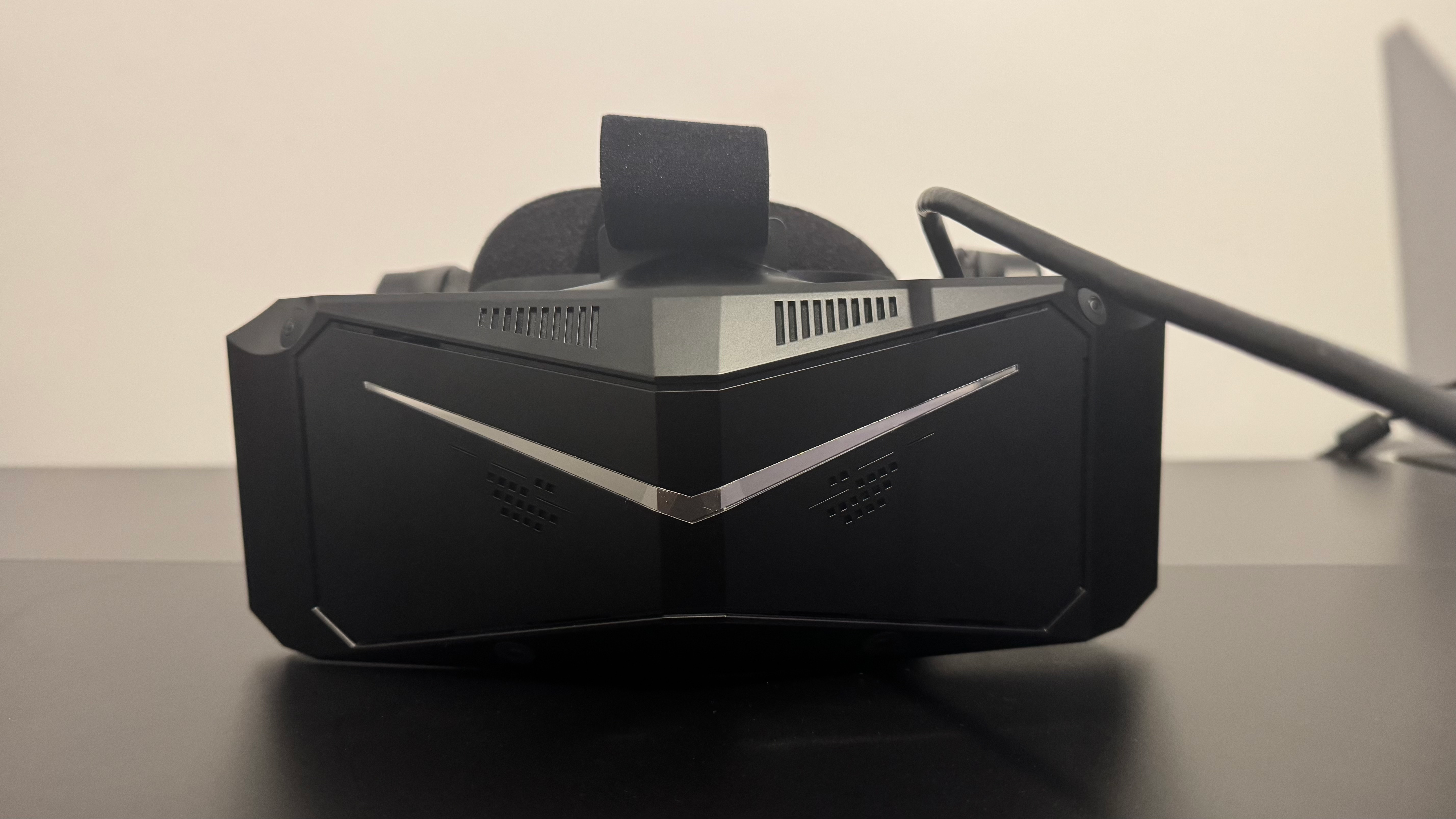

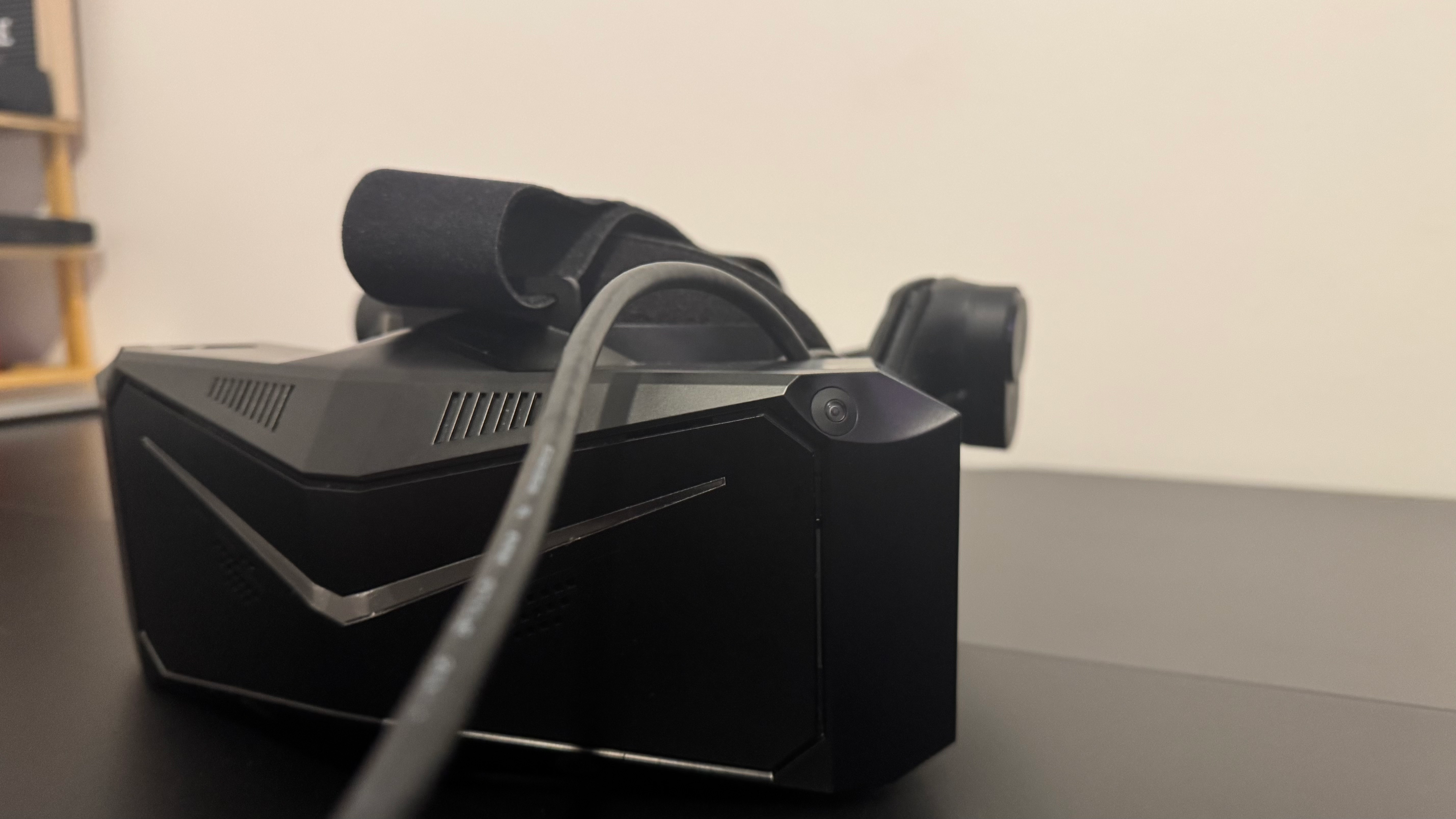
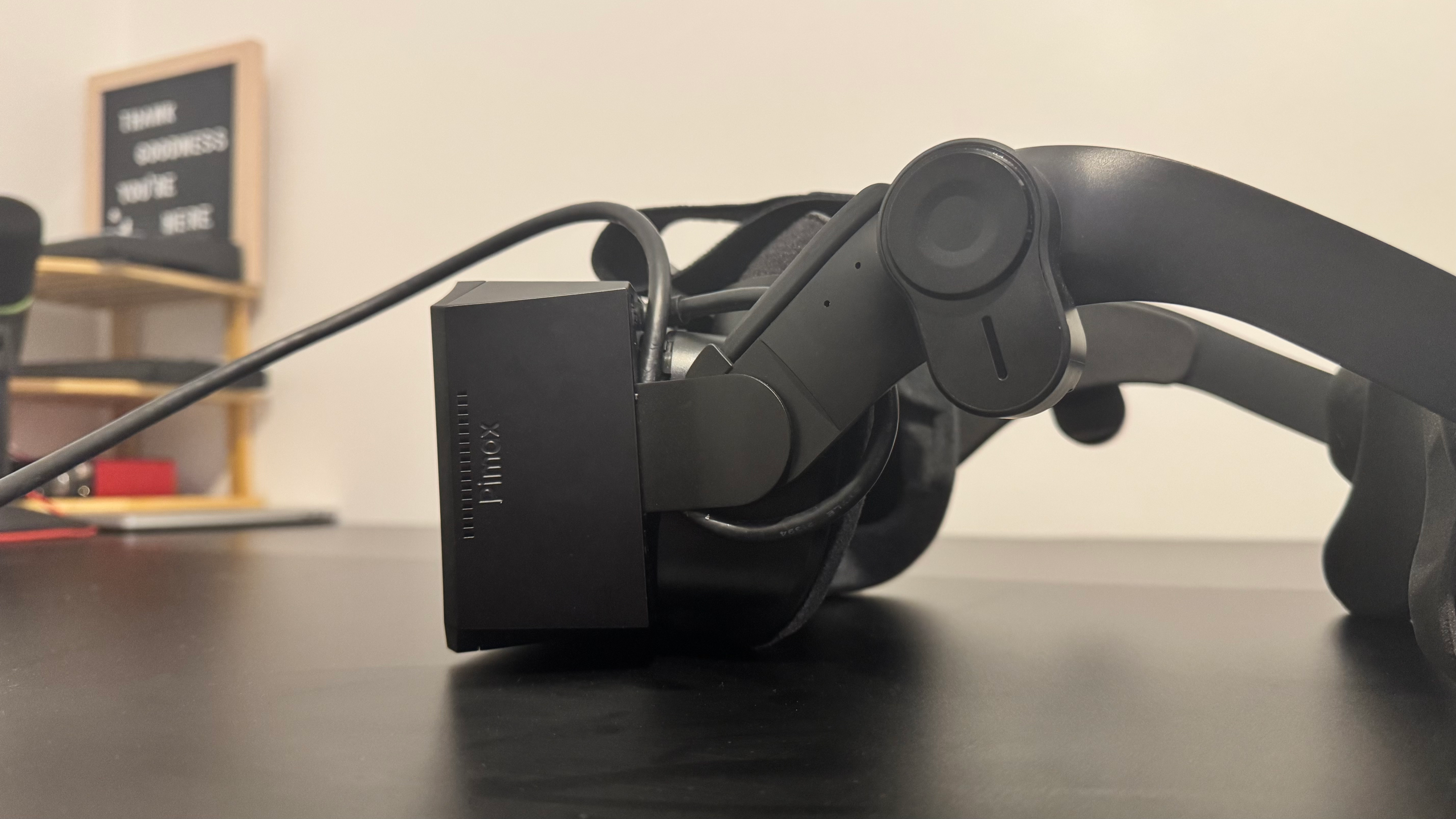
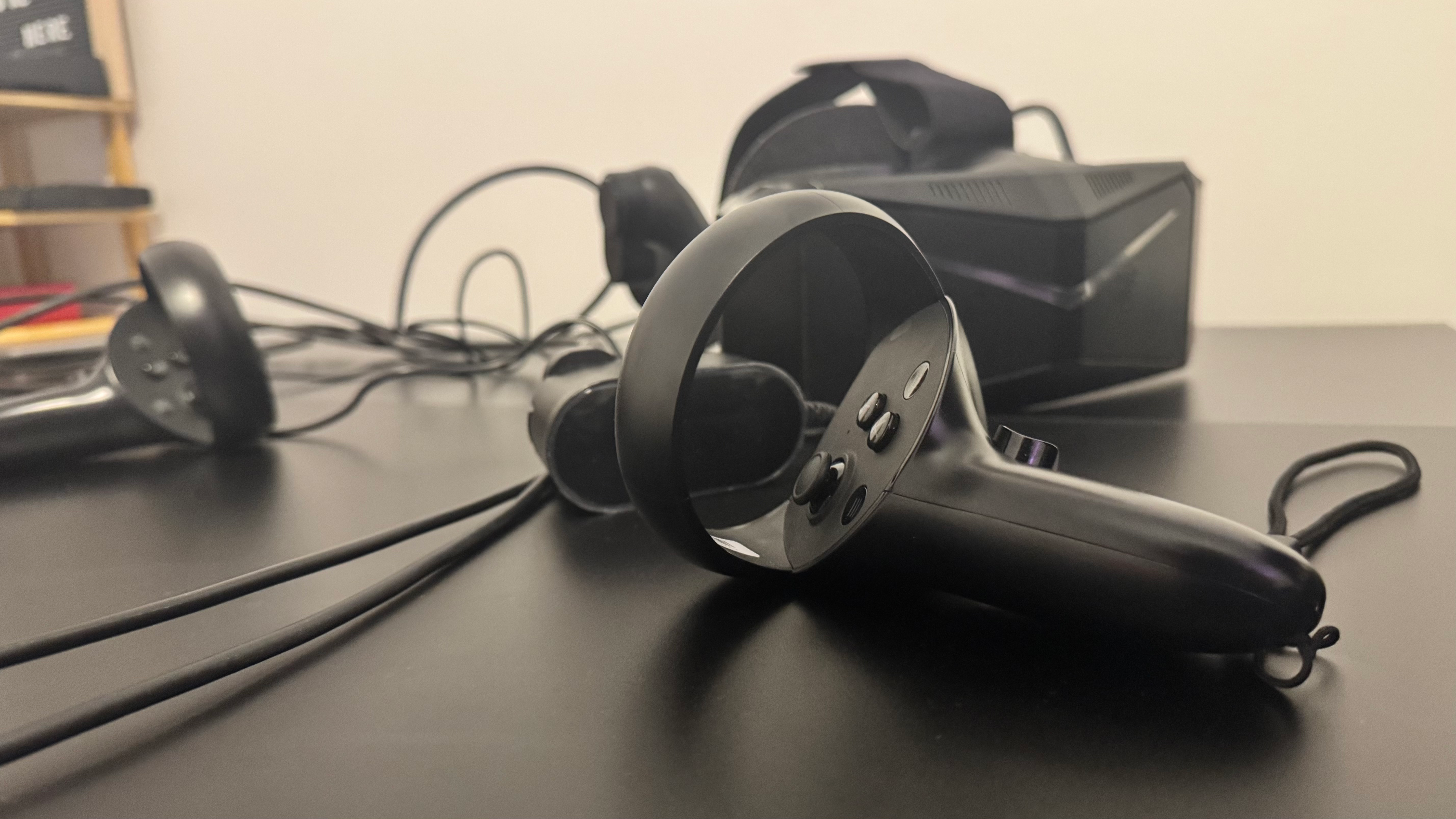
Without eye tracking like that found in the standard Pimax Crystal, this instead chooses to render things in the centre of the headset at a higher fidelity, with those outside of it at a lower quality. This rendering technique can be noticeable when you try to find it but mostly works rather well to get a little more performance out of your rig.
To put that 2880 x 2880 resolution into context, this is effectively one of the strongest resolution VR headsets on the mainstream market, behind Pimax's own 8K and 12K headsets and Varjo's XR4.
It places it fractionally ahead of the Varjo Aero and Varjo VR-3. At its price point of around $800, it outpaces many of them in price, even though it's a pretty big investment to make into a VR headset. This is a decent price point for high-end VR.
The aspheric Mini-LED lenses in the Crystal Light are nice and bright but going for this tech over the more popular pancake style has tacked on some mass in the headset itself at 815 g (29 oz) total. The Meta Quest 3 isn't super light yet shaves 300 g (11 oz) off this.
Unfortunately, this means that in active games like Beat Saber and Synth Riders, I felt myself constantly battling against the weight of the headset and the pull of the cable. It is looped in the headset itself, which helps alleviate some weight but not enough to stop me from getting into the habit of just holding the wire as I play. Playing the Nyan Cat theme in Pistol Whip is hard enough without the headset also working against me.
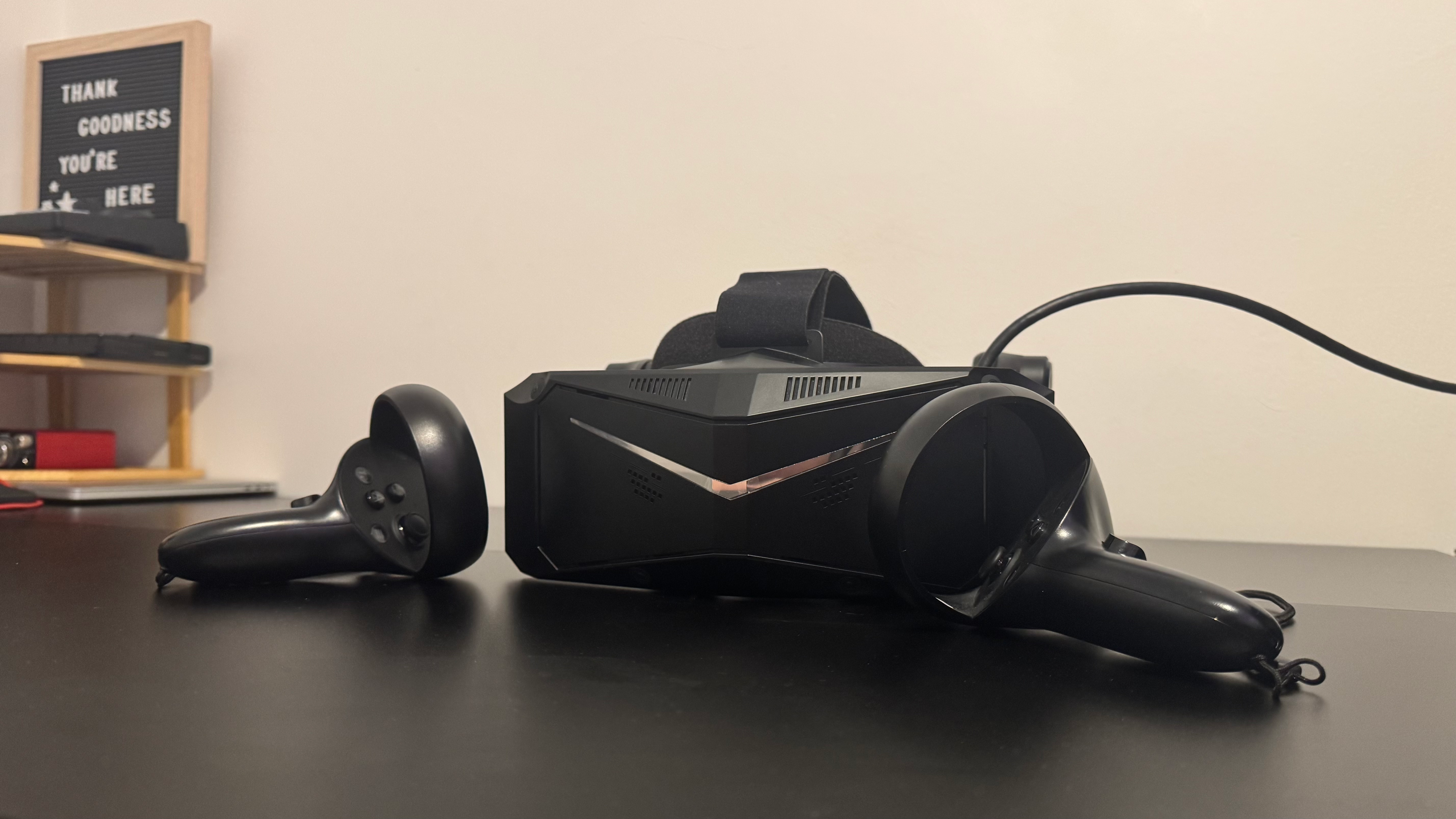
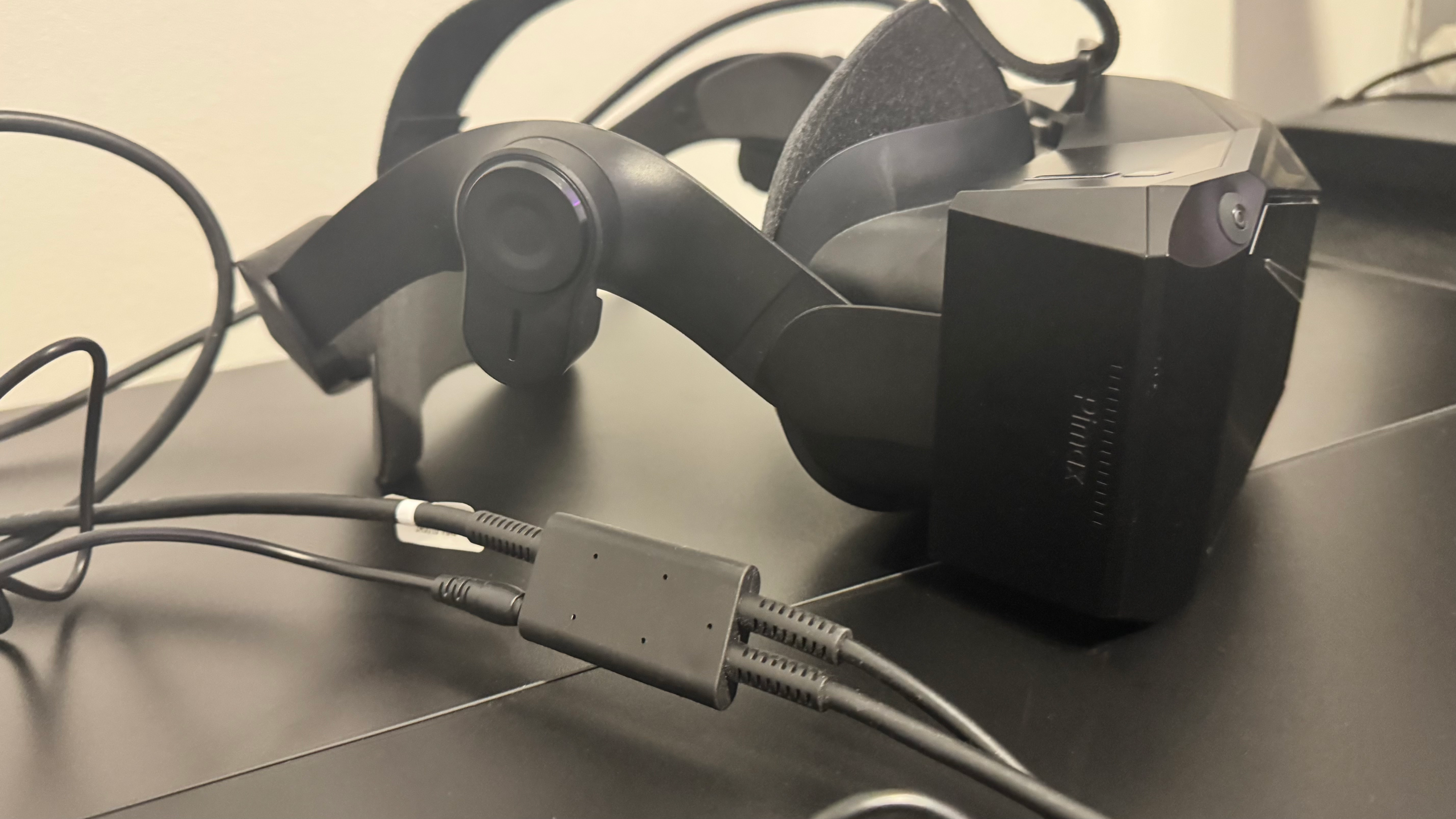
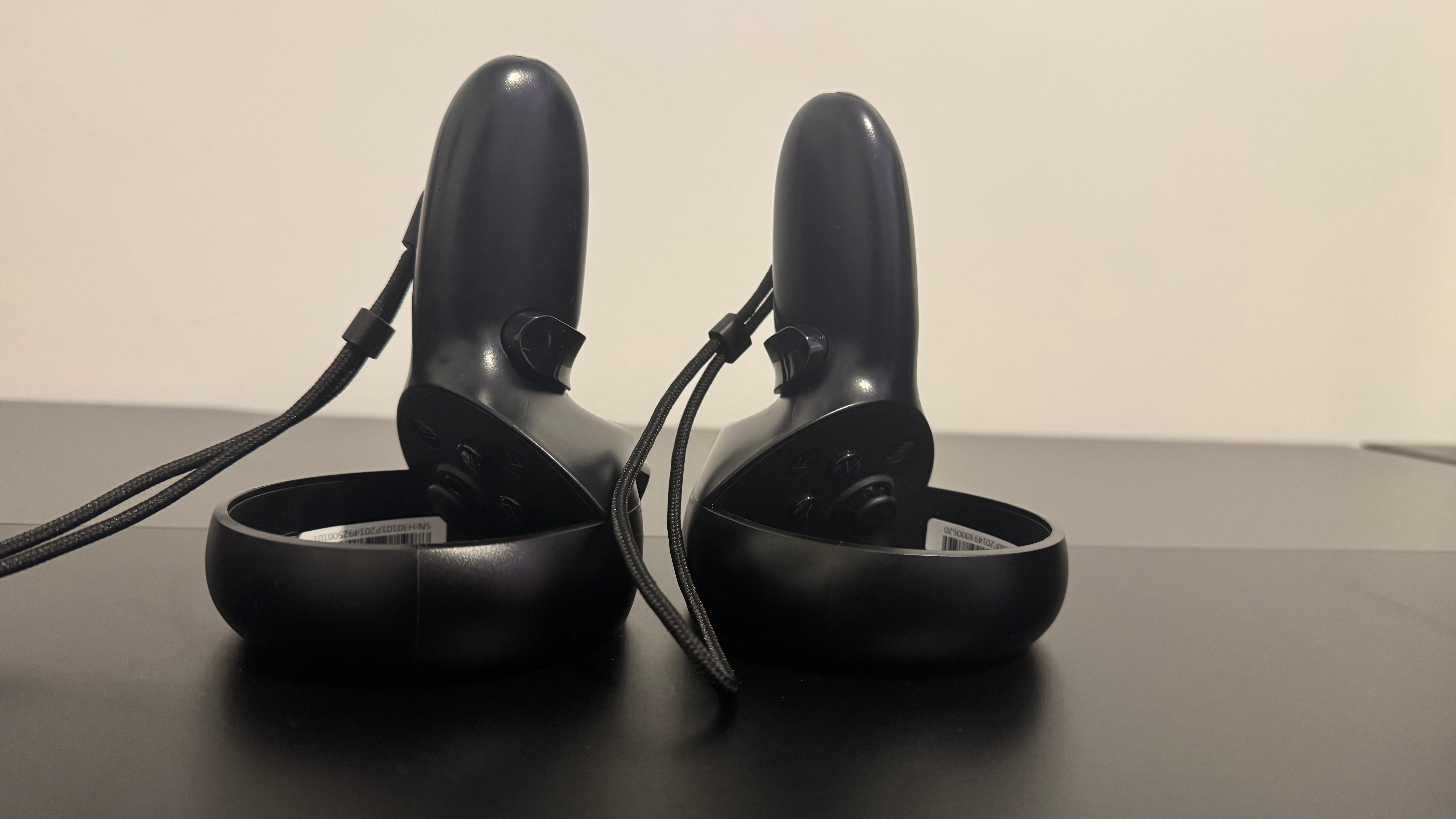
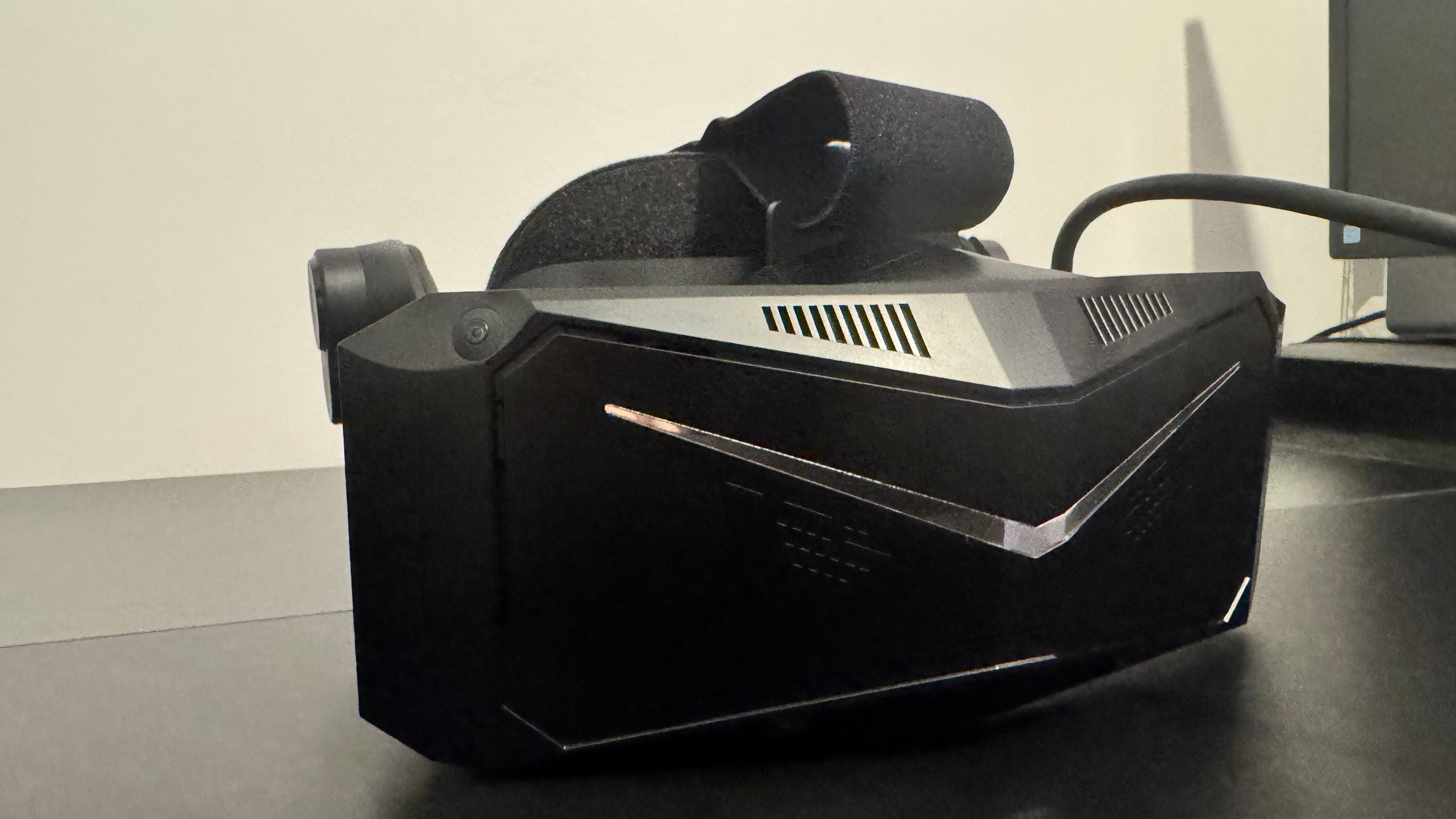
However, the headset is much better in slower games like A Fisherman's Tale, Red Matter, and Vacation Simulator. The clarity of the lenses adds a lot to play and a wide FOV of 115 degrees is excellent for immersive games. This brings me to perhaps the single best reason to pick up a Pimax: racing sim and cockpit games.
This feels like a headset intended for the likes of F1 22, Dirt Rally 2.0, and even space exploration games like No Man's Sky and that makes a lot of sense when you get situated in your gaming chair.
The extra FOV helps realise the size and space of the cockpit and driving games, a genre that has always managed to look rather pretty and feel especially crisp. I could see that long-term discomfort making endurance races much more difficult but it's fine while seated for a few races.
The swap from base station to inside-out tracking is smart, as it makes the set-up process a little easier, but the tracking itself is mostly just fine. Passthrough is grainy and in black and white and I did lose connection to my controls sometimes, though not nearly enough to pose any real problems with gameplay.
The controllers are mostly fine, taking after the look of the Meta Quest 2 controllers with their iconic ring design, but feeling a bit lighter and less sturdy. They feel heavily of plastic but are mostly comfortable in the palms.

✅ You're a sim racer: The clarity of this headset is immense and, thanks to its size, weight, and need to be tethered, you won't notice its downsides as much behind the wheel in a cockpit.
✅ The budget headsets just aren't clear enough for you: You notice how great this headset looks pretty quickly. If you want the best, this is a good way to get it, being one of the highest-resolution lenses in the market.
❌ You're an active VR gamer: The Pimax Crystal Light is big and clunky, and due to that, never feels secure when I'm bobbing and moving around. In light exercise, it's fine, but if you're jumping and ducking, it's not quite as comfortable.
❌ You don't have a good rig: VR can be a bit of a challenge to run on a normal rig but the increased clarity of this headset means you need something even beefier.
The Pimax Crystal Light feels somewhat niche to me, though not nearly as much as the Pimax Crystal. Cutting away some of the things that made the Pimax Crystal so expensive like its standalone mode, yet keeping a high resolution, up to 120 Hz refresh rate, and Mini-LED Display, this outshines the main competitors in specific areas but lacks the punch in overall feel and intuitiveness.
In short bursts, with the cable wrapped around my arm or on top of the chair I'm sitting on, I really see the vision here. The clear visuals, high FOV and good refresh rate make for an immersive experience in VR experiences that are mostly stationary. However, I've always used VR as a way to blow off steam or think about things after a long day and the setup process, comfort, weight, and general finickiness of the entire headset feel like it defeats that purpose.
With the Pimax Crystal Light, I feel like I've played the most promising VR headset of a few years ago but, outside of a few specific use cases, there are a handful of headsets I'd reach to over this one, even if it means a picture downgrade.
On the plus side, I need less raw computing power for it too. If you aren't quite as bothered as me by a cumbersome headset or only really play cockpit-bound games, this headset is well worth a look but, as a more general device, this Pimax device is Crystal clear but not very Light.
